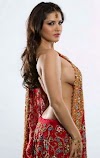
 Pictures: Ingo Swoboda, Josef Schuller and Wilhelm Weil at the First Class Dry Rieslings Tasting at the 1st International Riesling Symposium
Pictures: Ingo Swoboda, Josef Schuller and Wilhelm Weil at the First Class Dry Rieslings Tasting at the 1st International Riesling SymposiumEight very interesting lectures, four outstanding wine tastings - one in the morning and one in the afternoon of each day - and a walking wine dinner provided for two fascinating and highly entertaining days around Riesling at the 1st International Riesling Symposium that took place a couple of months ago at Schloss Rheinhartshausen in the Rheingau in Germany. The Symposium was attended by about 150 people, including such luminaries as Jancis Robinson from the UK, Willi Bruendlmayer from Austria, Helmut Doennhoff from the Nahe, Ernst Loosen from the Mosel and Colette Faller from Domaine Weinbach in Alsace, and many others. I have provided my impressions about the Symposium here.
This posting focuses on one (of the four) major tastings, in which we tasted 21 First Class dry Rieslings from Austria, Germany, France and the New World. I have reported about the tasting of aged Rieslings here and about the tasting of lusciously sweet Rieslings here.
Riesling
Worldwide, there are about 34.000 hectares planted with Riesling. Germany – with 22.400 hectares – accounts for 2/3 of the total. The second largest Riesling producer is Australia, with 4500 hectares. But this is only about 1/10 of the total. Nevertheless, Australia was a bit underrepresented at the 1st International Riesling Symposium. Alsace follows with 3500 hectares. Austria, the US with Washington State and New York State as well as New Zealand make up the remainder. But overall Riesling is really a niche wine, accounting for only less than 1 percent of total wine production in the world - but a very special niche wine.
Dry and Sweet Rieslings
We tasted dry Rieslings. Many wine drinkers, in particular outside of Europe, when they see a Riesling in the shelves, have the association of a sweet-style wine. This is however misguided. Rieslings as a rule are dry wines. Of course, there are the famous sugar sweet Beerenauslese, Trockenbeerenauslese, Eiswein and Schilfwein wines from Austria and Germany, the Sélection de Grains Nobles from France, the icewines from Canada and other Rieslings, made from botrytized, dried or frozen grapes. The grapes that go into these wines have such a high sugar content that there is nothing you can do to make dry wines out of these grapes. They inevitably produce nobly sweet wines. But apart from these exceptions, which account for only a tiny share of total production, Riesling grapes in Germany, Austria, Alsace, the US and Australia have normal sugar content at the time of fermentation and tend to produce dry wines, when fully fermented.
 Picture: Before the Tasting
Picture: Before the TastingHowever, modern cellar methods allow winemakers in Germany to produce wines with a bit of residual sugar with these grapes. There are principally two methods applied in Germany – but neither in Austria nor Alsace - for making these sweet-style Rieslings. First, you do not let the fermentation run its course and stop it; as a result, you get a deliciously sweet and low alcohol wine. Second, you let the wine fully ferment to a normal alcohol level and then add Suessreserve (sterilized juice) to achieve the desired degree of sweetness. These sweet-style wines have lost popularity in Germany, although there appears to be a comeback, but in any case remain very popular outside of Germany, for example in the US.
Tasting of First Class Dry Rieslings
Josef Schuller, Managing Director of the Weinakademie Oesterreich led a fascinating tasting of 21 dry Rieslings. In contrast to the other 3 tastings, it was a blind tasting with the wines only being discussed – by regions – following the tasting and the wine list only distributed after the event.
3 New World Wines
Josef Schuller released information only in thin slices. The first thing we learnt was that we had tasted: 3 New World wines, 3 wines from Alsace, 6 Austrian Austrian wines, 2 wines from the Nahe and Pfalz regions in Germany and 7 Rieslings from the Rheingau. Josef Schuller wanted us first to identify the 3 New World wines. The group quickly came forward with wines (20) and (3), but it took several attempts to identify wine (4) as the third New World wine.
(20) Forrest Wines is a small producer of premium white wines in Marlborough in New Zealand. Leaving behind careers in molecular biology and medicine, John and Brigid Forest returned to Marlborough in 1988 to establish their first vineyard in Wairau River Valley. Vintage 1990 saw the first Forrest wine.
(3) The regular dry Riesling of Chateau Ste Michelle in Washington State; Ernst Loosen produces his Eroica wines in a joint venture with Chateau Ste Michelle.
(4) Frankland Estate is a family-owned and operated winery in the Frankland River region of Western Australia. Frankland Estate combine organic viticultural practises with a minimal intervention approach to the fermentation and maturation of the wines in the cellar.
3 Alsatian Wines
Wine (15) from Domaine Weinbach was quickly identified. David Schildknecht then suggested wine (16) and was right. “The acidity is higher” David said. Somebody else suggested wine (10) – a Rheingau Riesling from Weingut Wegeler – and was wrong. Finally, somebody came up with wine (21) – a Domaine Trimbach Clos Sainte Hune, arguable one of the best Rieslings of the world.
 Picture: David Schildknecht at the 1st International Riesling Symposium
Picture: David Schildknecht at the 1st International Riesling Symposium6 Austrian Wines
Gunter Kuenstler from Weingut Kuenstler was the first to come forward with wine (13) and he was right. “A distinctive nose, a typical Wachau wine” Gunter said. Somebody else then suggested wine (5) and was right. With some coaching by Josef Schuller, Willi Klinger identified wines (8) and (9): “More acidity, more stone fruit than the Alsatian wines” Willi said. The two other Austrian wines – (7) and (17) – were not identified by the group, despite further help by Josef Schuller.
 Picture: Willi Bruendelmayer and Wilhelm Weil
Picture: Willi Bruendelmayer and Wilhelm Weil2 Wines from the Pfalz and the Nahe
There was a long period of silence before David Schildknecht dared to suggest that wine (12) was from the Nahe. This was close, but wrong. Christian Witte then suggested that wine (6) was a Nahe wine: “More fruit driven” Christian Witte said and he was right. The other German non-Rheingau wine was not identified: wine (14).
 Picture: Christian Witte from Schloss Johannisberg
Picture: Christian Witte from Schloss Johannisberg7 Rieslings from the Rheingau
That left the remaining wines as the 7 wines from the Rheingau: (1), (2),(10),(11),(12),(18) and (19). We did not discuss the Rheingau wines. But the question came up, why Australia, the second largest Riesling producer in the World, was so underrepresented. David Schildknecht asked: “Where were the Mosel wines?” The Pfalz was also underrepresented, somebody else felt.
The Wine List
(1) 2009 Oestricher Lenchen Rosengarten, Riesling Erstes Gewaechs, Weingut Josef Spreitzer
(2) 2009 Ruedesheimer Berg Schlossberg, Riesling Erstes Gewaechs, Weingut August Kesseler
(3) 2009 Chateau Ste Michelle, Dry Riesling, Chateau Ste Michelle
(4) 2009 Frankland Estate Isolation Ridge, Riesling, Frankland Estate Wines
(5) 2009 Heiligenstein 1.Lage, Kamptal DAC Reserve Riesling, Weingut Schloss Gobelsburg
(6) 2009 Niederhaeuser Hermannshoehle, Riesling Grosses Gewaechs, Weingut Hermann Doennhoff
(7) 2009 Wachstum Bodenstein, Riesling Smaragd, Weingut Prager
(8) 2009 Steinerl, Riesling Smaragd, Weingut F.X.Pichler
(9) 2009 Singerriedel, Riesling Smaragd, Weingut Franz Hirtzberger
(10) 2008 Geheimrat J, Riesling, Weingut Wegeler
(11) 2008 Hochheimer Hoelle, Riesling Erstes Gewaechs, Weingut Kuenstler
(12) 2008 Ruedesheimer Berg Rottland, Riesling Erstes Gewaechs, Weingut Johannishof
(13) 2008 Schuett, Riesling Smaragd, Weingut Emmerich Knoll
(14) 2008 Pechstein G.C., Riesling, Weingut Dr. Buerklin-Wolf
(15) 2008 Riesling Grand Cru Schlossberg, Cuvee Sainte Catherine, Domaine Weinbach
(16) 2007 Riesling Grand Cru Rangen de Thann, Clos Saint Urbain, Domaine Zind Humbrecht
(17) 2007 Zoebinger Heiligenstein, Riesling Lyra, Weingut Bruendelmayer
(18) 2007 Kiedricher Graefenberg, Riesling Erstes Gewaechs, Weingut Robert Weil
(19) 2007 Hattenheim Wisselbrunnen, Riesling Erstes Gewaechs, Weingut Hans Lang
(20) 2006 John Forrest, Collection Riesling, Forrest Wines
(21) 2004 Riesling Clos Sainte-Hune, Domaine Trimbach
schiller-wine - Related Postings
Visiting Weingut Josef Leitz in Ruedesheim – Johannes Leitz is Germany’s Winemaker of the Year, Gault Millau WeinGuide 2011
1.International Riesling Symposium
Impressions from the Riesling & Co World Tour 2010 in New York
When Americans Drink German Wine - What They Choose
German Wine Basics: Sugar in the Grape - Alcohol and Sweetness in the Wine
Terry Theise's Top German Wines of the 2009 Vintage
Germany's Top 16 Winemakers - Feinschmecker WeinGuide 2011
Aging Potential of Riesling – A Wine Tasting at the 1st International Riesling Symposium in Germany Led by Jancis Robinson
Lusciously Sweet Rieslings - Wine Tasting at the 1st International Riesling Symposium
In the Glass: 2009 Kiedricher Turmberg Riesling Trocken and 2009 Riesling Kiedricher Graefenberg Spaetlese, both Weingut R. Weil, Kiedrich, Rheingau
Visiting Jean Trimbach at Maison Trimbach in Ribeauville in Alsace
Visiting Yann-Leon Beyer at Maison Leon Beyer in Eguisheim in Alsace





0 Yorumlar